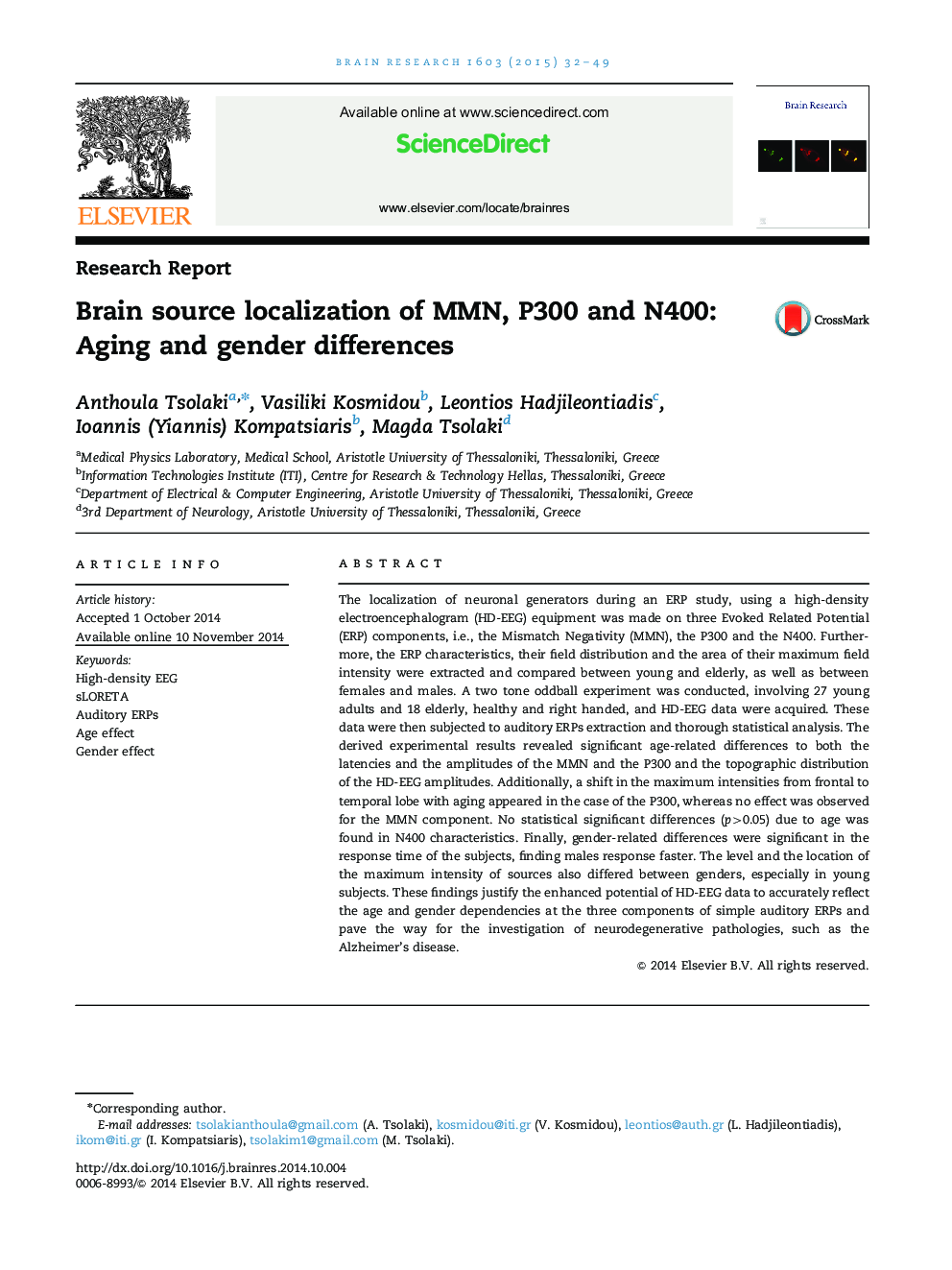| Article ID | Journal | Published Year | Pages | File Type |
|---|---|---|---|---|
| 4323846 | Brain Research | 2015 | 18 Pages |
•MMN and P300 present smaller amplitude and longer latencies with age.•Brain source localization of P300 and maximum current field intensity shift significantly with age.•Brain source localization of ERP components is gender related, with more pronounced differences in younger age.
The localization of neuronal generators during an ERP study, using a high-density electroencephalogram (HD-EEG) equipment was made on three Evoked Related Potential (ERP) components, i.e., the Mismatch Negativity (MMN), the P300 and the N400. Furthermore, the ERP characteristics, their field distribution and the area of their maximum field intensity were extracted and compared between young and elderly, as well as between females and males. A two tone oddball experiment was conducted, involving 27 young adults and 18 elderly, healthy and right handed, and HD-EEG data were acquired. These data were then subjected to auditory ERPs extraction and thorough statistical analysis. The derived experimental results revealed significant age-related differences to both the latencies and the amplitudes of the MMN and the P300 and the topographic distribution of the HD-EEG amplitudes. Additionally, a shift in the maximum intensities from frontal to temporal lobe with aging appeared in the case of the P300, whereas no effect was observed for the MMN component. No statistical significant differences (p>0.05) due to age was found in N400 characteristics. Finally, gender-related differences were significant in the response time of the subjects, finding males response faster. The level and the location of the maximum intensity of sources also differed between genders, especially in young subjects. These findings justify the enhanced potential of HD-EEG data to accurately reflect the age and gender dependencies at the three components of simple auditory ERPs and pave the way for the investigation of neurodegenerative pathologies, such as the Alzheimer’s disease.
